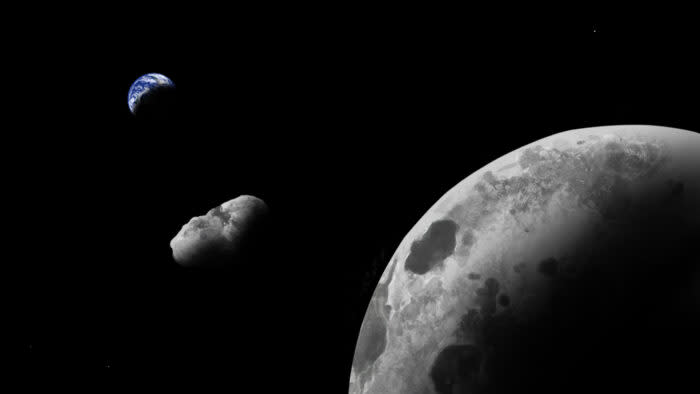Scientists Identify Near-Earth Asteroid’s Birthplace
When scientists discovered the asteroid Kamo’oalewa in 2016, they almost immediately suspected it might have once been a part of the Moon. It’s a sound theory — many of Kamo’oalewa’s properties (its density, coloration, and orbit, among others) all pointed to an origin closer to home than many known asteroids. But proving it? Well, that’s another issue entirely.
But now astronomer Yifei Jiao, leading a team from Tsinghua University in China, thinks he’s found a way. In a paper recently published in the journal Nature, Jiao and his colleagues have identified the Giordano Bruno, located on the far side of the moon, as the probable origin of the 40-to-100-meter diameter quasi-satellite.
In the astronomical version of assembling a jigsaw puzzle, the researchers used “numerical simulations to demonstrate that Kamo’oalewa’s physical and orbital properties are compatible with a fragment from a crater larger than 10–20 km formed on the Moon in the last few million years,” according to the paper’s abstract.

Second Moon
Their most likely suspect is Giordano Bruno. The logic they used to reach that conclusion is fairly straightforward. Scientists know that Kamo’oalewa — sometimes known as our “second Moon” — is less than 100 million years old because near-Earth asteroids like the one in question don’t tend to stick around our neck of the woods very long. They also haven’t observed any debris that would have formed when Kamo’oalewa was gouged out of the Moon, meaning the asteroid is older than 10 million years.
So they searched for a Moon crater that matched those ages and was large enough to have once held 100 meters of solid stone. Although there were tens of options, Giordano Bruno was the best match.
A final piece of evidence is the probable composition of the crater walls, which (scientists think) matches Kamo’oalewa’s composition. Combining all the above, Jiao and his team concluded that “Giordano Bruno is the only possible source crater satisfying the criterion.”
The best part about all this is that the scientific community and science-loving readers don’t have to wait long to get a final confirmation. Scientists already have meteorites on Earth that came from the Giordano Bruno crater. And the Chinese space agency plans to launch the Tianwen-2 next year, an unmanned mission to collect a sample from Kamo’oalewa and drop it back on Earth. Comparing the two samples will be relatively easy.
The post Scientists Identify Near-Earth Asteroid’s Birthplace appeared first on Explorersweb.

